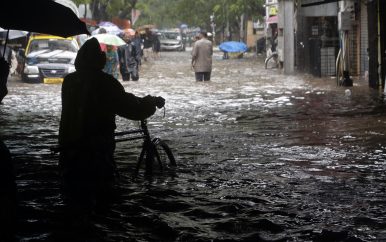Floods, Droughts, and India's Uncertain Climate Future

A recent report by the Asian Development Bank (ADB) and the Potsdam Institute for Climate Impact Research (PIK) confirmed what millions of Indians – and many more in South Asian countries – have been experiencing: the region has the highest exposure to floods. A whopping 130 million people in coastal zones of Bangladesh, India, and Pakistan are at risk of being displaced by the end of the century.
At the same time, the researchers observed that the “average global flood losses in 2005 were approximately $6 billion per year and will increase to $52 billion by 2050.” Of the top 20 cities incurring these losses, 13 are in Asia, of which four are in India: Mumbai, Kolkata, Chennai, and Surat. Another study published in the scientific journal Global Change Biology reported that only six of 22 river basins in India have the potential to cope with climate change.
In June 2013, nearly 5,700 were presumed dead after a series of cloud bursts caused severe floods and devastating landslides in the north Indian state of Uttarakhand, home to several Hindu and Sikh pilgrimage sites. The heavy rainfall was 375 percent more than the average rain received, causing the Chorabari Glacier at 3,800 meters to melt, and eruption of the Mandakini river. The high number of casualties is attributed to the warnings by the meteorological department not being taken seriously. This is a common feature across India: local administrations claim that warnings are not geographically specific and hence evacuation is not always possible.
No comments:
Post a Comment